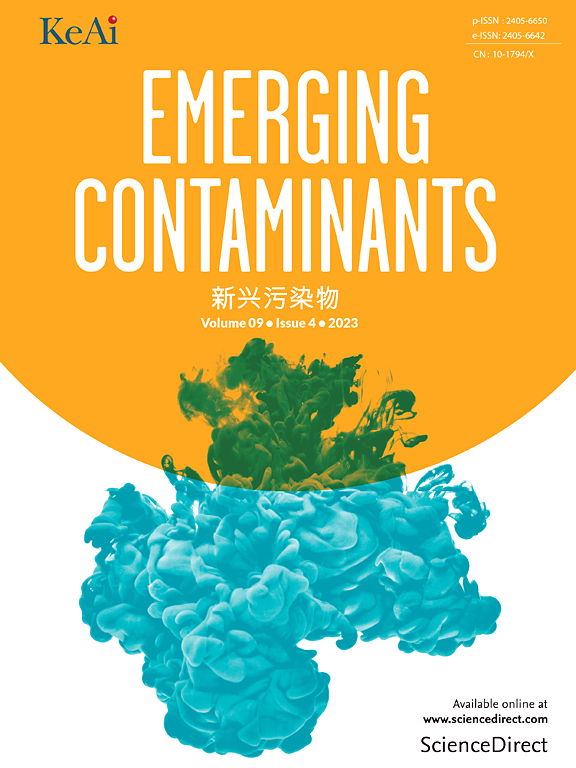化妆品成分在水生生态系统中的发生及生态毒性研究进展
IF 6.9
2区 环境科学与生态学
Q1 ENVIRONMENTAL SCIENCES
引用次数: 0
摘要
消费者对化妆品的需求持续上升,这可能带来环境风险,因为化妆品成分可能通过废水排放、消费者行为、不适当的环境政策和无效的水处理工艺进入水生系统。这篇综述汇编了关于化妆品成分在水生系统中出现的证据,以及它们对水生生物的潜在毒性和相关的环境问题。现有的研究主要针对去角质剂、紫外线过滤器、抗氧化剂、防腐剂、香料和溶剂,这些成分在已知化妆品成分中所占比例不到1%。塑料微珠和防腐剂被确定为水生环境中的主要成分,主要是废水样品。据报道,许多已确定的化合物对水生生物,即无脊椎动物、藻类和鱼类具有毒性。在被评估的化妆品成分中,八烯和乙基己基对氨基苯甲酸二甲基(紫外线过滤器)、丁基羟基甲苯(抗氧化剂)、麝香二甲苯(香料)和邻苯二甲酸二乙基己基(溶剂)对水生生物的毒性程度最高。了解这些动态对于制定环境风险缓解策略以及为该领域的未来研究和监管工作提供知识非常重要。本文章由计算机程序翻译,如有差异,请以英文原文为准。

Occurrence and ecotoxicity of cosmetic ingredients in aquatic ecosystems: A narrative review
Consumer demand for cosmetic products continues to rise which can pose an environmental risk as cosmetic ingredients can enter aquatic systems through wastewater discharge, consumer behaviors, inadequate environmental policies, and ineffective water treatment processes. This review compiles the evidence regarding the occurrence of cosmetic ingredients in aquatic systems, and their potential toxicity to aquatic life and the associated environmental concerns. Existing research primarily targets exfoliants, ultraviolet (UV) filters, antioxidants, preservatives, fragrances, and solvents, representing less than 1 % of known cosmetic ingredients. Plastic microbeads and preservatives were identified as the predominant ingredients in aquatic environments, primarily in wastewater samples. Many of the identified compounds were reported to exhibit toxicity towards aquatic organisms, namely invertebrates, algae and fish. Among the cosmetic ingredients assessed, octocrylene and ethylhexyl dimethyl p-aminobenzoic acid (UV filters), butylated hydroxytoluene (antioxidant), musk xylene (fragrance), and diethylhexyl phthalate (solvent) exhibited the highest degree of toxicity towards aquatic organisms. Understanding these dynamics is important for devising mitigation strategies on environmental risks and providing knowledge for future research and regulatory endeavors in this field.
求助全文
通过发布文献求助,成功后即可免费获取论文全文。
去求助
来源期刊

Emerging Contaminants
Medicine-Public Health, Environmental and Occupational Health
CiteScore
10.00
自引率
6.70%
发文量
35
审稿时长
44 days
期刊介绍:
Emerging Contaminants is an outlet for world-leading research addressing problems associated with environmental contamination caused by emerging contaminants and their solutions. Emerging contaminants are defined as chemicals that are not currently (or have been only recently) regulated and about which there exist concerns regarding their impact on human or ecological health. Examples of emerging contaminants include disinfection by-products, pharmaceutical and personal care products, persistent organic chemicals, and mercury etc. as well as their degradation products. We encourage papers addressing science that facilitates greater understanding of the nature, extent, and impacts of the presence of emerging contaminants in the environment; technology that exploits original principles to reduce and control their environmental presence; as well as the development, implementation and efficacy of national and international policies to protect human health and the environment from emerging contaminants.
 求助内容:
求助内容: 应助结果提醒方式:
应助结果提醒方式:


